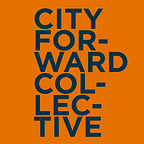For Milwaukee students, learning opportunities vary greatly during COVID-19
Some schools provide full distance learning, others only offer paper worksheets
By: Isral DeBruin (last updated May 27)
Schools are now in the 11th week of shifting to serve students remotely during the COVID-19 crisis, and as the school year draws to a close, approaches to instruction still vary widely across the city — and even between classrooms within the same schools.
In many cases, schools have provided only very basic enrichment opportunities for students in the form of printed packets of worksheets. Some individual teachers are going further, engaging in voluntary efforts to teach new content to the students in their specific classrooms.
While the vast majority of Milwaukee schools are now providing some form of learning opportunity to their students, fewer than half of schools are endeavoring to provide a coordinated, school-wide, comprehensive distance learning program designed to be a genuine replacement for in-person instruction.
Fortunately, there are exceptions: While schools remain shuttered against COVID-19, City Forward Collective is highlighting those implementing distance learning programs that keep students moving forward in every classroom. While every school has room for improvement in meeting new challenges during this chaotic time, some stand out as models.
Click to view the schools we have profiled so far:
- Milwaukee Excellence Charter School
- Notre Dame School of Milwaukee
- Milwaukee College Prep
- St. Augustine Preparatory Academy
- Rocketship Public Schools
- Milwaukee Academy of Science
- United Community Center
- St. Marcus Lutheran School
- Carmen Schools of Science and Technology
- Dr. Howard Fuller Collegiate Academy
- Cristo Rey Jesuit High School
- Highland Community School
- St. Anthony School
- Seeds of Health
- Malaika Early Learning Center and Christ-St. Peter Lutheran School
- LUMIN Schools
- Messmer Schools
Meaningful learning must continue as soon as possible
In the first days of this crisis, schools rightly focused first on meeting the basic needs of their school community. Continuing these provisions is essential. Next, schools must build on these successful first efforts by providing distance learning opportunities that keep students on track.
When school buildings closed March 17, more than 1/3 of the school year remained. On April 16, state officials announced school buildings would not reopen before the scheduled end of the school year. That means schools must implement meaningful alternatives to in-person instruction now, or else deprive students of a large proportion of their annual learning progress.
The stakes for Milwaukee are high: Research indicates children from low-income communities lose significant academic ground during traditional school breaks. A similar phenomenon will likely occur during the current school disruption. Without intervention, children already the furthest behind will lose even more ground, and our city’s worst-in-the-nation achievement gaps will widen.
Schools must enter a new phase of their COVID-19 response
This matters beyond the here and now. Some experts have warned that periodic school closures may be necessary beyond the current school year, at least until a vaccine for SARS-CoV-2 is widely available. In this event, schools will need robust distance learning programs and digital infrastructure that can be ’switched on’ at a moment’s notice.
Barring a miracle cure for COVID19, distance learning is no longer a luxury, but an essential component of our K-12 education system. Educators, school leaders, and policymakers must adapt to this new reality. There is no time to waste.
Isral DeBruin is director of strategy and communication at City Forward Collective. He is a former elementary school teacher and award-winning education reporter.
